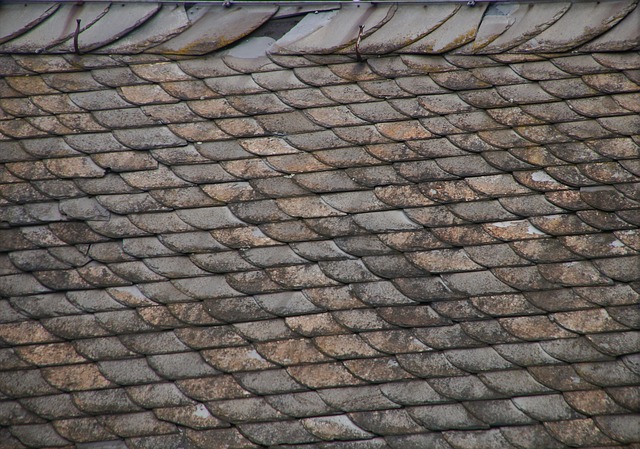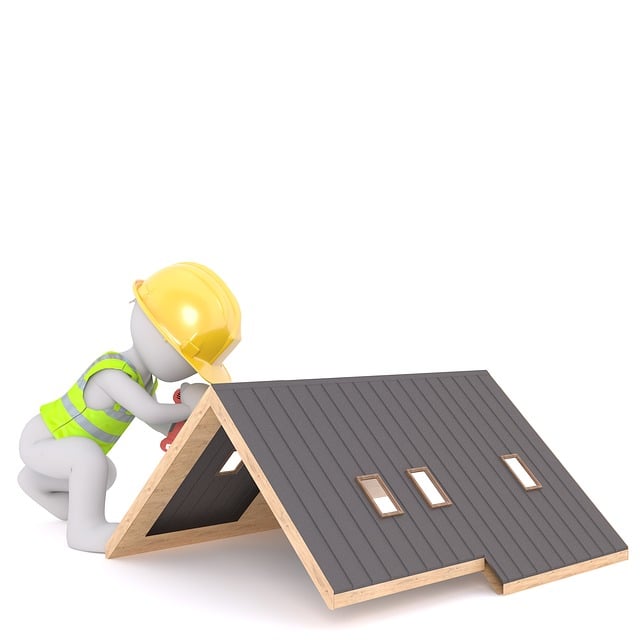Roofers are essential professionals who specialize in maintaining and repairing roofs, ensuring the structural safety and longevity of buildings. They use advanced technology like infrared scanners and moisture meters to detect issues early and perform targeted repairs to extend a roof's lifespan. Homeowners should watch for signs like water leaks, stains after rainfall, damaged shingles, or daylight coming through the attic, as these may indicate the need for professional roofer intervention. Regular assessments by skilled roofers are crucial for preventing costly repairs and avoiding structural hazards by catching potential problems early. Maintaining a roof with routine checks can save homeowners money in the long term, maintain energy efficiency, and provide a safe living environment.
Professional roofers conduct comprehensive inspections that start with a visual survey from the ground and continue with an on-roof examination of critical areas like flashing points, valleys, and penetrations. They check for signs of wear, damage, or hidden moisture using specialized tools. The roofer's inspection also includes evaluating the underlying roof structure and attic ventilation to ensure optimal performance and longevity of the roof.
When it comes to selecting roofing materials, a roofer's expertise is vital in choosing the best option for a home, considering factors like local weather conditions, architectural style, and personal preferences. Asphalt shingles, slate, wood shakes, metal roofs, and tiles each have different lifespans and benefits, and a professional roofer can guide homeowners in making an informed decision that suits their needs and budget. Regular maintenance by a skilled roofer is key to the long-term success of any roofing system.
When it comes to safeguarding your home, few elements are as critical as a sound roof. A robust structure above your head wards off the elements, shields your interior from the harshness of nature, and maintains your dwelling’s overall integrity. This article delves into the multifaceted role of professional roofer services in detecting and repairing leaks, decay, and structural weaknesses. It outlines clear signs that indicate when your roof may require an immediate inspection, emphasizing the importance of regular maintenance for homeowners to prevent costly repairs down the line. We explore the step-by-step process of a comprehensive roof inspection, the longevity expectations of common roofing materials, and how various weather conditions can impact your roof’s health. Additionally, we address the consequences of neglecting inspections and maintenance, the advanced technologies modern roofers use for leak detection, and the necessary skills and training to become a competent roofer. Homeowners will find valuable advice on DIY inspections, choosing a reputable roofing contractor, navigating insurance claims, understanding warranties, and ensuring energy efficiency. For those concerned with environmental impact, we also discuss sustainable roofing practices. Through this comprehensive guide, homeowners can make informed decisions to protect one of their most significant investments—their home’s roof.
- Understanding the Role of Professional Roofers in Leak Detection and Repair
- Signs Your Roof May Need Immediate Inspection
- The Importance of Regular Roof Maintenance for Homeowners
- Step-by-Step Process of a Comprehensive Roof Inspection
- Common Roofing Materials and Their Longevity Expectations
Understanding the Role of Professional Roofers in Leak Detection and Repair

When homeowners or property managers encounter issues with their roofing systems, the expertise of professional roofers becomes indispensable. These skilled individuals specialize in detecting and addressing various types of damage, from minor leaks to significant structural weaknesses. Their role in maintaining the integrity of a building’s uppermost layer is multifaceted, involving not just repair work but also preventive maintenance that can save property owners considerable expense and inconvenience down the line.
Roofers are trained to employ a variety of techniques and technologies to locate leaks with precision. They use tools like infrared scanners to identify thermal patterns indicative of water intrusion, as well as moisture meters to detect hidden leaks that could lead to decay or compromise the structural integrity of the roof. By identifying problems early, professional roofers can perform targeted repairs, effectively extending the lifespan of a roof and safeguarding the contents and occupants below. Their comprehensive approach ensures that every shingle, flashing point, and joint is thoroughly inspected for any signs of wear or damage, thus providing peace of mind to property owners concerned about the safety and longevity of their buildings.
Signs Your Roof May Need Immediate Inspection
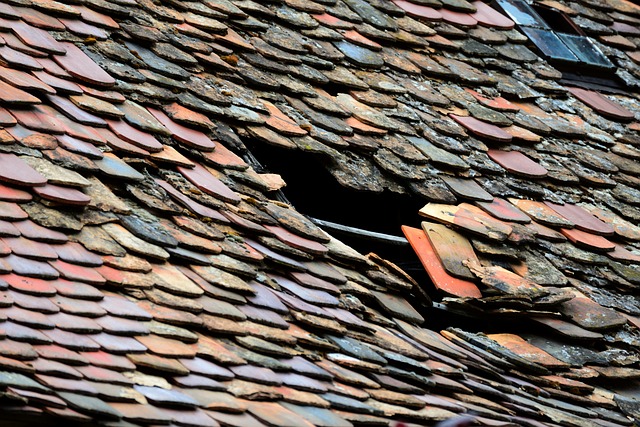
When homeowners notice certain signs, it may be indicative that their roof requires an immediate inspection by a professional roofer. One glaring indicator is the presence of water stains or dripping sounds within the living quarters, particularly after rainfall or melting snow. This often signifies that the roof’s protective layers are compromised, allowing water to penetrate the interior structure. Additionally, homeowners should be vigilant for any visible signs of wear on the roof’s surface, such as cracked, curled, or missing shingles. These issues can lead to water infiltration and may also indicate underlying decay or structural weaknesses that could pose more significant problems over time. Another critical sign is the presence of daylight or rays of light coming through the roof boards in the attic space. This light penetration suggests that there may be holes or significant damage in the roof’s sheathing, necessitating a thorough inspection by an experienced roofer to ascertain the extent of the damage and the necessary repairs. It is also advisable to inspect the roof after extreme weather events, as high winds, hail, or fallen debris can cause immediate and often unnoticeable damage that could lead to leaks or structural compromise if left unaddressed. Homeowners should prioritize scheduling a roofer’s visit if any of these signs are observed to prevent further damage and ensure the continued safety and integrity of their home’s structure. Regular inspections by a qualified roofer can also help in detecting potential issues before they escalate, safeguarding your home from water damage and costly repairs.
The Importance of Regular Roof Maintenance for Homeowners
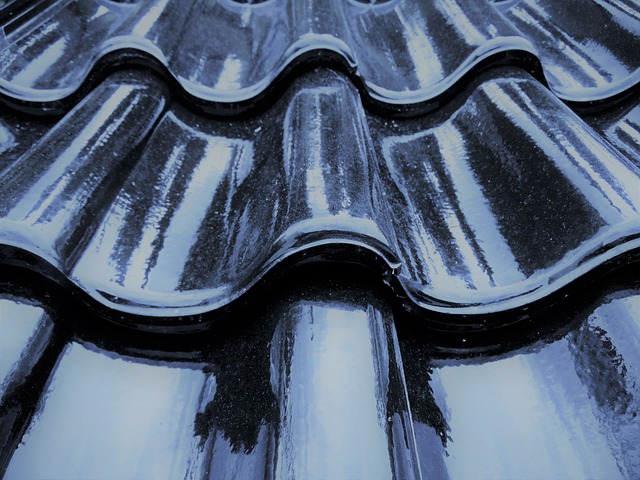
Engaging a skilled roofer on a regular basis is crucial for maintaining the structural health and longevity of a home. Roofs are constantly exposed to the elements, from scorching sun to driving rain, and over time, this exposure can lead to wear and tear, leaks, or even compromise the structural integrity of the roof itself. Regular inspections by a professional roofer can identify minor issues before they escalate into costly repairs or replacements. Such maintenance not only protects the home’s interior from water damage but also ensures that the roof’s insulation remains effective, thereby optimizing energy efficiency throughout the year. Moreover, staying proactive with roof care can extend the lifespan of the roofing materials significantly, saving homeowners from the need for premature investments in new roofing systems. By leveraging a roofer’s expertise, homeowners can safeguard one of their most valuable assets, ensuring that it stands strong against the test of time and environmental challenges. Regular maintenance is a prudent investment that pays dividends in the form of safety, comfort, and long-term cost savings for the property owner.
Step-by-Step Process of a Comprehensive Roof Inspection
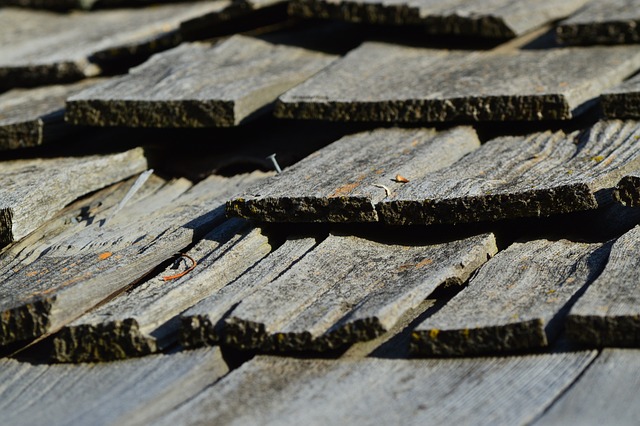
A comprehensive roof inspection is a meticulous process that involves a series of steps to evaluate the condition of a roof effectively. Initially, a skilled roofer will conduct an initial visual survey from the ground, noting any obvious signs of wear or damage such as missing shingles, cracks, or visible leaks. This preliminary assessment helps in determining if a closer examination is necessary. Upon reaching the roof, the roofer systematically inspects all areas, including flashing points, valleys, and penetrations where water intrusion is most likely to occur. They carefully examine the condition of the shingles or roofing material, checking for curling, buckling, or granule loss, which can indicate aging or potential leaks.
The roofer’s inspection continues with a detailed analysis of the roof’s structure, including the decking, underlayment, and insulation to ensure they are intact and free from moisture. They look for signs of decay, such as soft spots or rot, which could compromise the structural integrity of the roof. The roofer also checks for proper ventilation in the attic space, essential for maintaining energy efficiency and extending the lifespan of the roof. Throughout this process, the roofer utilizes various tools like a moisture meter to detect hidden moisture, a hail damage audit kit to identify dents or cracks from hail impact, and binoculars for hard-to-reach areas. This thorough approach enables the roofer to provide a comprehensive assessment of the roof’s current state and any repairs or maintenance that may be required to ensure its longevity and performance.
Common Roofing Materials and Their Longevity Expectations

When it comes to roofing materials, each type offers distinct advantages and longevity expectations. A seasoned roofer will have expertise in assessing various roofing systems for signs of wear, leaks, or impending decay. Asphalt shingles, a common choice due to their affordability and versatility, typically last between 15 to 30 years, depending on the climate and installation quality. Slate, with its natural durability, can endure for upwards of 75 years or more, making it a top contender for long-term performance. Wood shakes and shingles, which can range from 30 to 40 years in lifespan, offer a rustic appeal but require regular maintenance to ensure their longevity. Metal roofs, prized for their energy efficiency and minimal environmental impact, often come with a warranty of around 40 to 70 years, though they can last even longer when properly maintained. Lastly, tiles, both concrete and clay, generally serve between 30 to 50 years, offering a balance of durability and aesthetic value. A skilled roofer is instrumental in identifying the best material for a particular home, considering factors like local weather patterns, architectural style, and homeowner preferences, ensuring the roof provides optimal protection and service for years to come.
homeowners must prioritize roof integrity for maintaining a safe and comfortable living environment. Professional rooftop inspectors, or roofers, play an indispensable role in detecting and addressing leaks, decay, and structural issues before they escalate. Recognizing the early signs of roof distress is crucial for timely intervention and upkeep. This article has outlined the significance of regular roof inspections and maintenance, detailing the expert processes involved and the varying longevities of common roofing materials. By understanding these aspects, homeowners can make informed decisions to protect their homes from the elements, ensuring the ongoing safety and structural soundness of their property. Engaging a competent roofer is a wise investment that offers long-term benefits and peace of mind.

